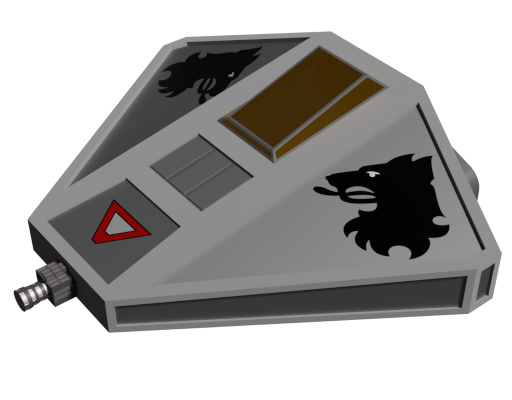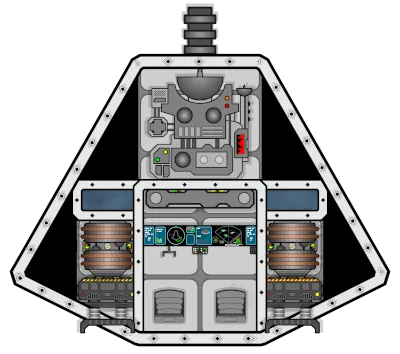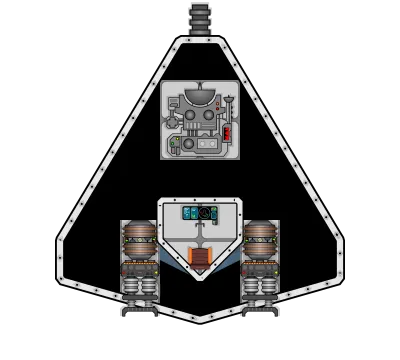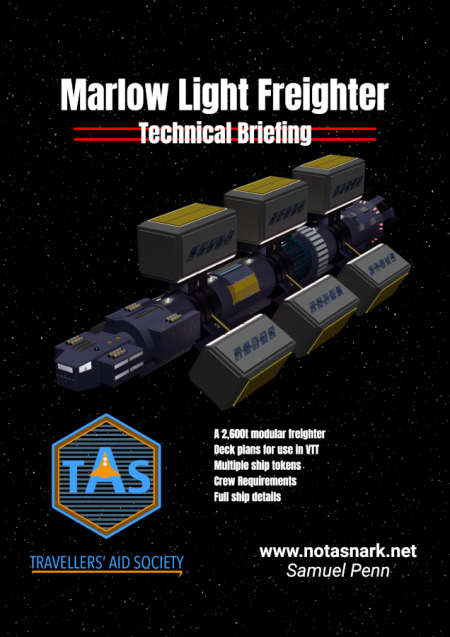Ships of Elite

There have been a lack of games this week, due to players being away, so instead I’ve been working on some more ship designs for Traveller. I recently published the Marlow Light Freighter, a new TAS supplement that details a 2,600t freighter for Mongoose Traveller. As I mentioned previously, this required a shift to Scribus as a publishing tool rather than Google Docs, and I’ve been practising with some smaller ship designs.
I started with a quick design for the Sidewinder scout, a ship from the (original) Elite computer game (by David Braben and Ian Bell). I’ve since decided to try fleshing out more ships from the game, both because it’s been an idea I’ve been toying with for a while, but also because it gives me practice with a combination of the Mongoose High Guard rules, Scribus and also Dungeondraft.

A lot of the ships so far have been smallcraft:
- Gecko – 8t fighter
- Krait – 10t fighter
- Sidewinder – 20t scout
- Viper – 50t heavy interceptor
- Worm – 10t orbital shuttle
The ship design rules are really optimised for larger craft, and there’s a lot of use of small fractional numbers trying to get everything to fit. For larger ships, I tend to round numbers off for simplicity. But when you have only 10t to play with, whether something is 0.66t or 0.74t can make a big difference. It’s also meant that I’ve had to create some more Dungeondraft assets for smaller items – such as ¼t engines.

The other complexity is the shape of the vehicles. In 1984, Elite had to keep things as simple as possible, so all ships are convex in shape. They are also very pointy, with lots of wedges and sharp edges. I’m trying to keep to a similar style, though I have tended to chop off edges so that they aren’t completely sharp.
You still end up with a lot of internal volume that is unusuable. Mostly I’ve used it for armour, but it some cases the deck plans don’t stretch to the full size of the ship.
To try and ensure that the 3D models match the deck plans, I import the deck plans into Blender and build the models around them. I try to leave a height of 3m between decks, though that’s not always possible. The images of the Viper below show how the deck plans look inside the model, with sufficient gaps left sometimes around the edges to account for spaces where there wouldn’t be sufficient height.

This also allows me to try and match the position of airlocks on the deck plans to places on the hull.
The other complexity is matching the original Elite designs to the Mongoose Traveller rules. Many of the Elite ships are fighters with a crew of one or two – which implies smallcraft with a tonnage of 10t to 20t. However, they are also equipped with multiple lasers and many ships carry missiles.

Traveller doesn’t allow such ships to have more than one weapon. The actual sizes given in the Elite handbook are also huge – even a single pilot fighter like the Krait works out at over 250t in Traveller sizes.
Rather than try to force an exact conversion, I’m instead using the Elite ships as inspiration, and sticking to the Traveller rules.
My current plan for the rest of the ships is currently for them to have the following sizes:
- Transport, 80t
- Adder, 100t
- Asp, 200t
- Cobra I, 200t
- Moray Starboat, 200t
- Cobra III, 300t
- Constrictor, 400t
- Fer-de-lance, 400t
- Python, 800t
- Boa, 1,600t
- Anaconda, 3,200t
These sizes aren’t necessarily based on the original sizes, but on what feels right to me. It also gives a wide range of sizes for ships from 100t to 1000t and larger.
The current list of completed ships is available here, and I plan to be adding to it over time. I may also go back and modify them over time, as I find mistakes in the designs. There is a zip file available which has all the deck plans and renders available in separate files. The source for everything is on Gitlab.
For the bigger ships, I do want to try and make the engineering areas more interesting. Something I realised after publishing the Marlow, was that the engineering sections are very boring. It would be more interesting if the engineering decks consisted of multiple interconnected rooms, with plenty of space for creeping around and hiding. This, I think, would make them more useful from an RPG perspective.
Finally, yes I did make it to ELITE on the disc based BBC micro version of the game. I started with the tape version, then moved to disc (far bigger selection of ships), then the BBC Master version and also ArcElite – so I may start taking a look at the ArcElite ships at some point once I’ve finished the others.
I have played Oolite a bit, but haven’t got very far.
